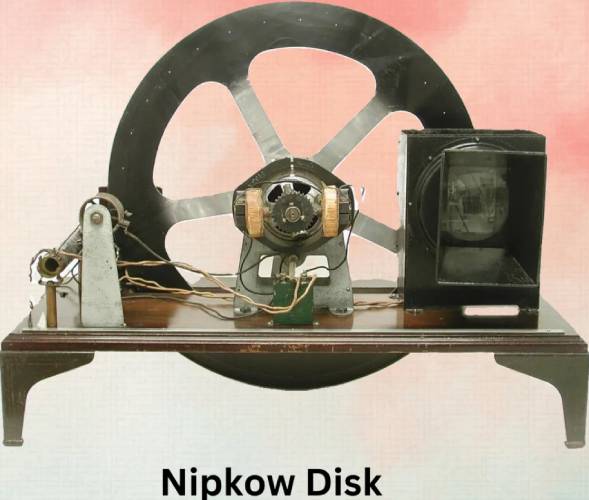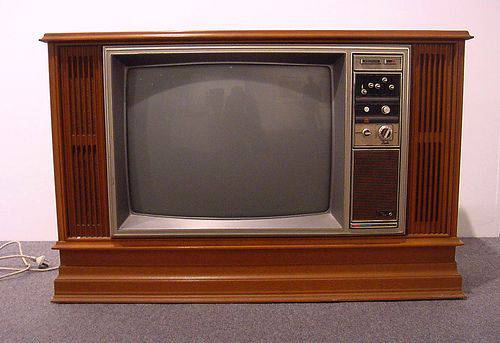Imagine Life Without TV
Have you ever tried to picture life without the endless stream of your favorite shows, live sports excitement, or captivating dramas? For most of human history, such experiences were beyond imagination. Until visionary minds began to dream of transmitting moving images over distances, our world was without television.
The Journey of Innovation: Perseverance and Discovery
Television’s story is more than just tech advancements—it’s about overcoming obstacles and pushing boundaries. It began with a burning question: Could we capture and share moments of life through images? This quest led to breakthroughs driven by curiosity and determination.
Meet the Pioneers of Television
Let’s dive into the tales of the brilliant minds who made television possible. These visionaries laid the foundation for the TV revolution from Paul Nipkow and his Nipkow Disk to the rivalries and collaborations between Philo Farnsworth and Vladimir Zworykin.

Triumphs and Trials: The Early Days
Celebrate the triumphs and face the challenges of early television pioneers. Discover how their groundbreaking work turned a flickering dream into the beloved entertainment device we have today.
A Technology That Changed Everything
Travel back in time and explore how television transformed our world. From its humble beginnings to becoming an essential part of our lives, the story of TV is a testament to human ingenuity.

The History of Television: Key Milestones
17th Century: Early Concepts
- Athanasius Kircher’s Vision (1646): German polymath Kircher imagined devices using lenses and mirrors to project images, hinting at early television ideas.
- Leonardo da Vinci’s Camera Obscura (1500s): Da Vinci’s sketches of a darkened chamber projected images onto a wall, showcasing early attempts to capture visual experiences.
18th Century: Signaling Systems
- Claude Schaeffer’s System: Schaeffer’s use of mirrors to transmit coded messages over distances foreshadowed future TV technology.
May and Smith’s Selenium Discovery (1873)
- Pioneers Beyond the Spotlight: English engineers May and Smith discovered that selenium’s electrical resistance changed with light, laying the groundwork for converting images into electrical signals.
The Nipkow Disk (1884)
- Paul Nipkow’s Invention: Nipkow’s spinning disk captured and transmitted images point by point, a crucial step towards modern television.
Marconi’s Radio Breakthrough (1895)
- The Radio Revolution: Marconi’s invention of radiotelegraphy proved wireless communication’s potential, paving the way for transmitting TV signals.
The Birth of “Television” (1900)
- World’s Fair Buzz: The term “television,” coined by Constantin Perskyi, captured the public imagination and sparked further research.
The Audion Tube (1906)
- Lee De Forest’s Breakthrough: The Audion vacuum tube amplified signals, crucial for long-distance transmission and future television systems.
John Logie Baird’s Mechanical TV (1923)
- Mechanical Marvels: Baird’s system used a spinning disk to transmit moving images, making strides in television technology despite early limitations.
Charles Francis Jenkins’ Electromechanical TV (1928)
- A Public Demonstration: Jenkins showcased an electromechanical TV system with low resolution and frequent breakdowns.
Early Color Experiments (1929)
- Baird’s Color Transmission: Baird’s use of color filters in a spinning disk demonstrated the potential for color television, despite its early flaws.
Vladimir Zworykin’s Electronic TV (1931)
- The CRT Revolution: Zworykin’s all-electronic system with the Cathode Ray Tube (CRT) offered sharper images and better resolution, setting the stage for mass adoption.
RCA Model 630-TS (1938)
- Commercial Television Begins: The RCA Model 630-TS became the first commercially available electronic TV set, marking a significant step towards widespread adoption.
The Color TV Revolution (1950)
- Battle of the Color Standards: The 1950s saw the introduction of color TV with RCA’s RGB system, transforming the viewing experience with richer colors.
Modern Advancements: From HD to Streaming
- High-Definition TV (HDTV): The late 1980s brought sharper images and digital compression.
- From Analog to Digital: The shift to digital broadcasting in the 1990s improved quality and interactivity.
- Streaming Services: Platforms like Netflix and Hulu revolutionized TV with on-demand, subscription-based content.
The Future of Television: What’s Next?
AI-Powered Personalization
- Tailored Viewing: AI could learn your preferences and suggest content just for you, even helping create personalized shows and movies.
Immersive Experiences
- Virtual and Augmented Reality: VR could place you in the middle of the action, while AR could blend virtual elements with reality for an enhanced viewing experience.
The Quest for Resolution
- 8K and Beyond: The push for higher resolutions like 16K aims to make TV images as close to real life as possible.
Changing Interaction
- Social and Personal Viewing: Social media integration fosters community discussions, but on-demand content might lead to more solitary viewing experiences.
Challenges Ahead
- Privacy and Access: Addressing data privacy with AI, preventing social isolation, and ensuring equitable tech access are crucial for the future of TV.
Television’s Broader Impact
A Cultural Powerhouse
- Beyond Entertainment: TV informs, educates, and shapes popular culture, as a major advertising tool and influencing societal trends.
Beyond the Screen
Television’s journey from early inventions to today’s high-tech screens showcases human creativity and innovation. We owe much to the inventors who shaped this transformative technology, which continues to enrich and influence our lives.

Frequently Asked Questions (FAQ) About the Evolution of Television
1. What was the first invention that led to television?
The journey towards television began with early concepts like Athanasius Kircher’s 17th-century ideas about projecting images using lenses and mirrors, and Leonardo da Vinci’s camera obscura. However, the first crucial breakthrough was Paul Nipkow’s 1884 invention of the Nipkow Disk, which could scan and transmit images.
2. Who were the key pioneers in the development of television?
Key pioneers include:
- Paul Nipkow: Invented the Nipkow Disk in 1884.
- John Logie Baird: Developed the first working mechanical television system in the 1920s.
- Philo Farnsworth: Created the first fully electronic television system.
- Vladimir Zworykin: Developed the Cathode Ray Tube (CRT), crucial for electronic TVs.
3. When did color television become widely available?
Color television became widely available in the 1950s. The FCC approved RCA’s RGB color system in 1953, leading to the introduction of color TVs and broadcasts.
4. How did radio technology contribute to television?
Guglielmo Marconi’s invention of radio telegraphy in 1895 demonstrated the feasibility of wireless communication, which was crucial for the later development of wireless television transmission systems.
5. What advancements in television technology have occurred in recent years?
Recent advancements include:
- High-Definition Television (HDTV): Introduced in the late 1980s for sharper images.
- Digital Broadcasting: Shifted from analog to digital in the 1990s, improving quality and interactivity.
- Streaming Services: Platforms like Netflix and Hulu have transformed content consumption.
6. What is the current state of television resolution?
The current highest resolution available is 8K, offering exceptionally detailed images. Research into even higher resolutions, like 16K, is ongoing to enhance picture quality further.
7. How is AI expected to influence the future of television?
AI is expected to offer personalized viewing experiences by analyzing viewing habits and suggesting content tailored to individual preferences. It may also assist in creating customized content and interactive storytelling.
8. What role do Virtual Reality (VR) and Augmented Reality (AR) play in the future of television?
VR and AR technologies are set to revolutionize television by offering immersive experiences. VR could place viewers directly in the action, while AR could overlay digital elements onto the real world, creating interactive viewing experiences.
9. What are some challenges facing the future of television?
Challenges include:
- Data Privacy: Ensuring AI-driven personalization respects user privacy.
- Social Isolation: Addressing the potential for increased solitary viewing.
- Equitable Access: Ensuring that advancements in television technology are accessible to everyone.
10. How has television impacted culture and society?
Television has influenced culture by shaping societal norms, providing educational content, and serving as a major advertising platform. It has become a primary source of information and entertainment, impacting how we view and understand the world.


